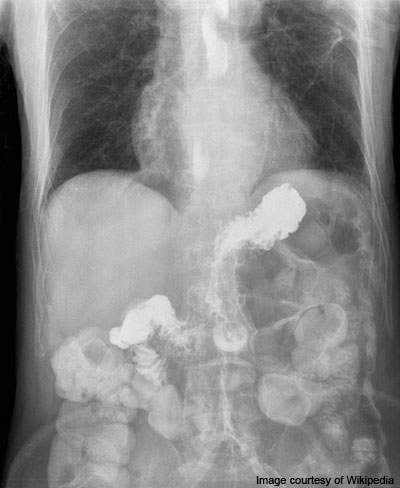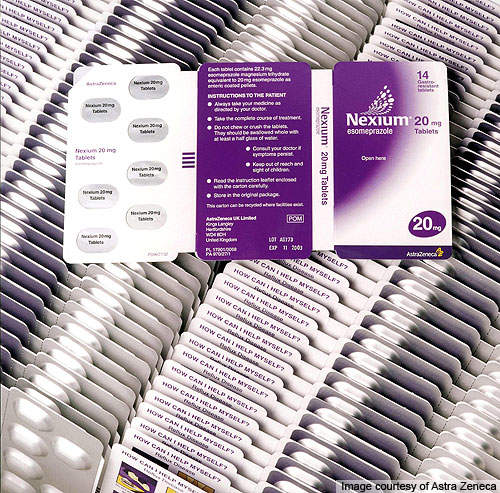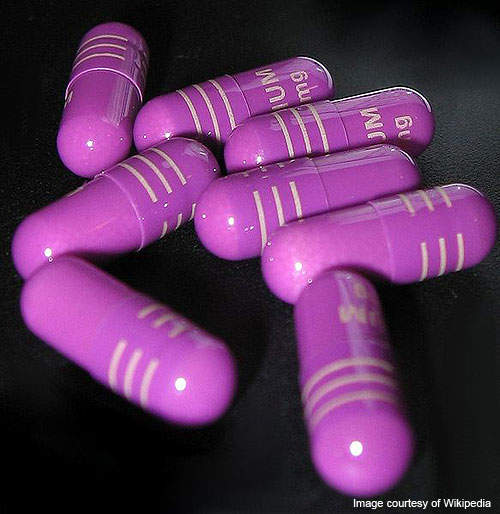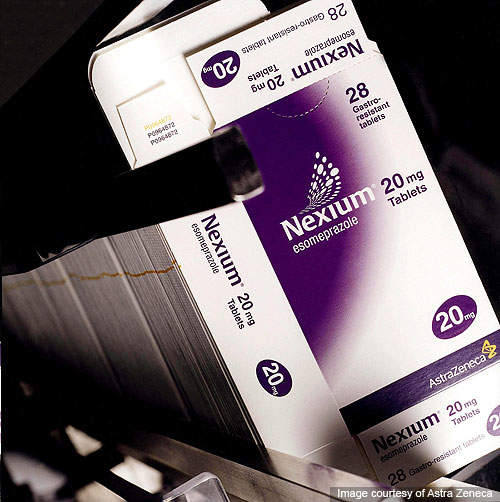Nexium I.V. (intravenous) / esomeprazole sodium is a proton pump inhibitor manufactured and marketed by Astra Zeneca for the treatment of gastroesophageal reflux disease (GERD).
In April 2005, Astra Zeneca received initial approval from the US Food and Drug Administration (FDA) for the use of Nexium I.V. as a short-term treatment (up to ten days) for GERD. In May 2006, Nexium (oral capsule) was approved by the FDA to treat GERD in 12 to 17-year-old children. The drug is approved in more than 120 countries across the world.
On 2 May 2011, Astra Zeneca received FDA approval for Nexium I.V. for treating GERD-affected children aged from one month to 17 years.
GERD
Muscle fibres stop backward movement of the food passing through oesophagus to the stomach.
However, in GERD the valve that separates oesophagus and stomach does not close properly, allowing acid to pass back into the oesophagus, thus creating frequent and persistent heartburn.
Although the exact prevalence of GERD in children is not clear, it is estimated that the disease affects 35% of babies born each year in the US.
Nexium I.V. mechanism of action
Nexium I.V. contains esomeprazole, which suppresses the gastric acid leak in the gastric parietal cell. The drug belongs to the proton pump inhibitor class of drugs, which block acid production. The drug also reduces gastric acidity.
Clinical trials
The FDA approval for Nexium I.V. was based on two period-crossover and four open-label studies. In these studies the patients were administered with 20mg and 40mg of oral and intravenous doses of Nexium.
The results of the studies showed that both Nexium intravenous and oral administration were similarly effective in suppressing the acid effects.
Astra Zeneca conducted randomised, open-label and international Phase I clinical trials on Nexium I.V. between October 2007 and October 2009. The study enrolled 42 patients up to 17 years old with GERD across the US, Australia, Belgium, Sweden and Hungary. The objective of the study was to assess the pharmacokinetics of Nexium I.V. once-daily in paediatric patients between zero and 17 years old.
A Phase II multicentre, randomised, double-blind, parallel-group and placebo-controlled study named RELAX was conducted on Nexium I.V. between April 2006 and April 2008. The study enrolled 1,100 patients in 134 centres.
The primary outcome measure was to compare Nexium I.V. with a placebo in evaluating the anti-asthmatic effect in asthmatics with GERD. The secondary outcome measure included finding the symptoms of GERD and evaluating the safety and tolerability of the Nexium I.V.
The company conducted a randomised, double-blind, multicentre Phase III study on Nexium I.V. between February 2004 and April 2005. The study enrolled 140 patients aged between 12 to 17 years old across 40 locations in the US. The primary outcome measure was to evaluate the safety and tolerability of the drug.
The company conducted Phase III clinical trials on Nexium I.V. from April 2007 to June 2008. The study enrolled one month to 11-month-old infants across 25 centres. The purpose was to assess the drug’s effectiveness in reducing the GERD signs and symptoms in infants.
Astra Zeneca conducted an open-label, randomised, two-way crossover study on Nexium I.V. between August 2002 and October 2002. The study enrolled 60 GERD patients. The primary outcome measure was finding the maximal acid output after ten days of Nexium 40mg administration. The secondary outcome measures included finding the basal acid output and comparing the effects of oral and intravenous Nexium doses.
Marketing commentary
Astra Zeneca’s patent for Nexium will expire in May 2014. Ranbaxy can sell generic version of the drug under the licence from Astra Zeneca from May 2014. On 29 October 2010, Astra Zeneca reached an agreement to co-promote and supply Nexium I.V in Japan with Daiichi Sankyo.







